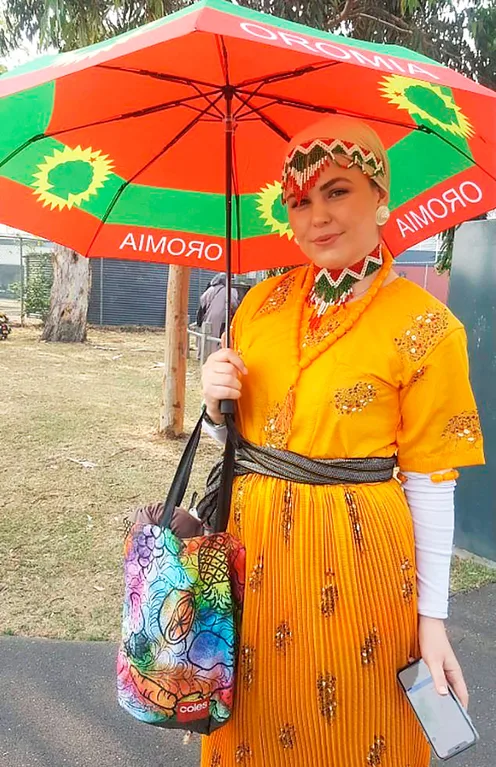What became of Belle Gibson, the wellness influencer who captivated audiences with her story of battling brain cancer only to be exposed as a fraud? This question has lingered in the minds of many since her public downfall. Her tale is one of ambition, deception, and ultimately, consequences that rippled through the wellness industry. In 2025, as interest reignites following Netflix's dramatization of her life, we delve deeper into what transpired after the scandal unfolded. The truth about Gibson’s actions reveals a complex narrative involving personal motivations, societal pressures, and the impact on those closest to her.
Belle Gibson initially gained fame by claiming she had beaten terminal brain cancer through natural remedies, including apple cider vinegar. Her story resonated deeply with individuals seeking alternative health solutions, leading to widespread acclaim and commercial success. However, investigations later uncovered that her diagnosis was fabricated. The revelation shattered trust within the wellness community and led to significant backlash against Gibson. Despite these challenges, she remains an intriguing figure whose legacy continues to provoke discussions about authenticity and accountability in digital influence.
| Personal Information | Details |
|---|---|
| Name | Belle Gibson |
| Date of Birth | April 1984 (approximate) |
| Nationality | Australian |
| Son's Name | Oliver |
| Career Highlights | Wellness Influencer, Author of The Whole Pantry |
| Controversy | Faked terminal brain cancer diagnosis; misled followers |
| Legal Status | Faced lawsuits from deceived customers |
| Reference Website | Grow News US |
Gibson’s journey began innocuously enough, with her sharing recipes and lifestyle tips rooted in holistic healing practices. Her platform grew rapidly as people connected emotionally with her purported battle against illness. Books like The Whole Pantry became bestsellers, bolstered by testimonials attesting to their transformative effects. Yet, cracks soon emerged when skeptics questioned inconsistencies in her narrative. Eventually, journalists exposed the falsehoods underpinning her persona, revealing that no medical evidence supported her claims of having cancer.
The repercussions were swift and severe. Lawsuits followed from disgruntled buyers who felt duped by Gibson’s misleading marketing strategies. Financial settlements drained resources amassed during her peak years, while public opinion turned decisively against her. Nevertheless, some observers speculate that underlying factors such as mental health struggles might have contributed to her behavior. These considerations complicate simplistic judgments about her intentions and actions.
Another critical aspect involves Oliver, Gibson’s son, born in 2010. While much attention focuses on the mother, little is known publicly about how this period affected him. Protective measures appear to have shielded Oliver from media scrutiny, ensuring his privacy amid the chaos surrounding his parent. As he approaches adolescence, questions persist regarding whether or not he retains any connection to the wellness world his mother once dominated. For now, details remain sparse, underscoring the family’s desire for normalcy outside the glare of publicity.
Netflix’s series “Apple Cider Vinegar” attempts to capture the essence of Gibson’s rise and fall, blending fact with dramatic license. While certain elements align closely with documented events, creative liberties taken in portraying relationships and interactions invite scrutiny. Critics argue that omitting specific legal ramifications softens the portrayal of Gibson’s ultimate fate, potentially diluting lessons learned from her case. Regardless, the production succeeds in sparking renewed curiosity about its central character.
In reflecting on Gibson’s trajectory, broader implications emerge concerning the intersection of technology, consumerism, and personal narratives. Social media platforms enable rapid dissemination of ideas but also heighten risks associated with misinformation. Users must exercise caution when evaluating sources, particularly when health-related advice is involved. Moreover, brands leveraging influencers bear responsibility for verifying credentials before endorsing partnerships. Lessons drawn from Gibson’s experience underscore the importance of transparency and integrity in modern communication landscapes.
As speculation continues about Gibson’s current activities, rumors suggest she may still engage privately in wellness initiatives without overtly promoting them. Such endeavors could reflect efforts to rebuild credibility quietly rather than confront past mistakes head-on. Meanwhile, her absence from mainstream discourse allows time for reflection both personally and collectively among stakeholders impacted by her earlier exploits. Whether future revelations will alter perceptions further remains uncertain, yet interest in her story endures due to its resonance with universal themes of trust, aspiration, and redemption.
Ultimately, examining Gibson’s saga invites introspection about human nature itself. Why do individuals fabricate stories so convincingly? How does society respond when confronted with betrayal at such scale? And most importantly, what steps can prevent similar occurrences moving forward? By addressing these queries thoughtfully, perhaps we can navigate increasingly complex informational environments more effectively while fostering greater empathy towards those entangled in webs of deceit.




